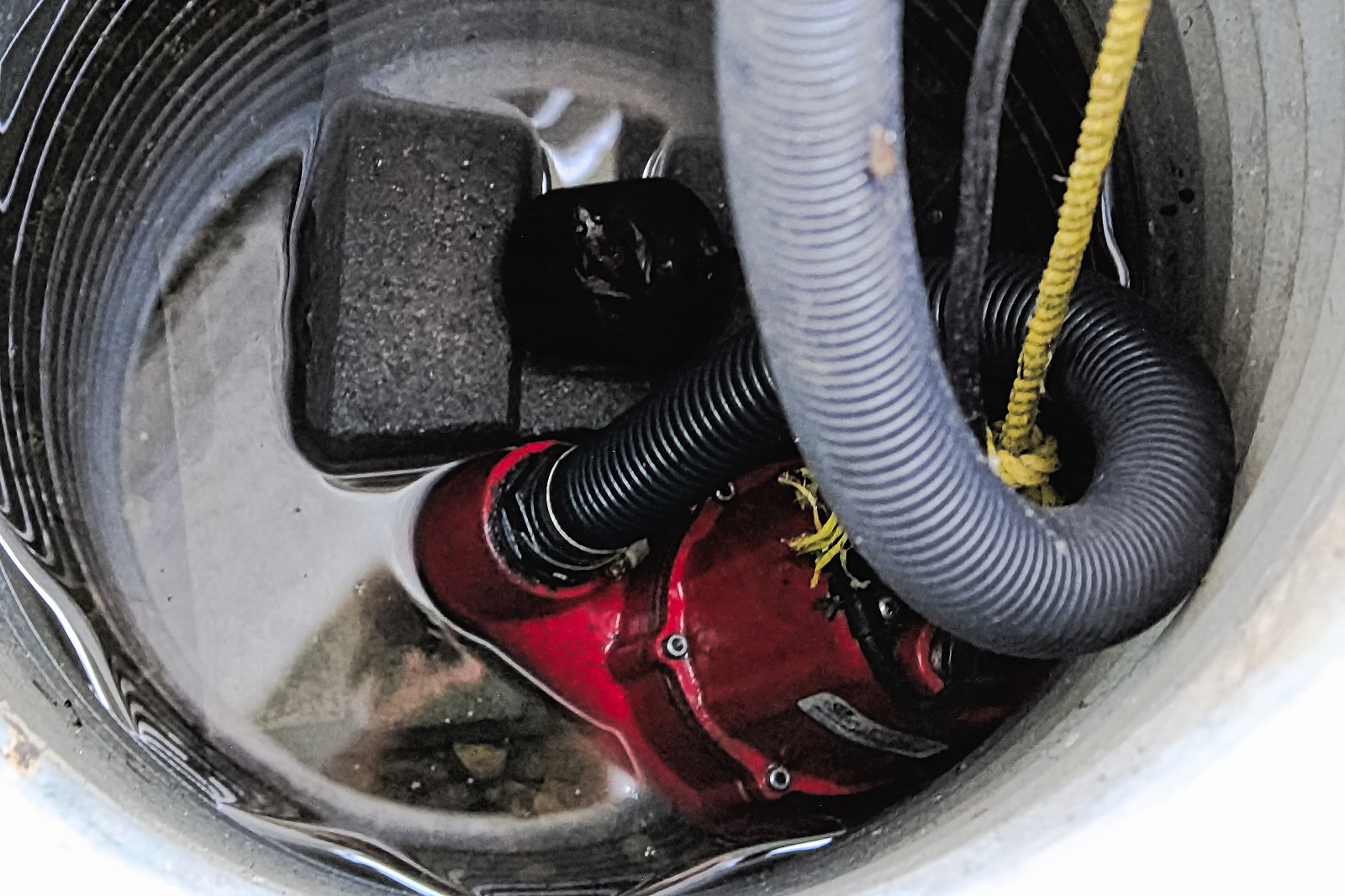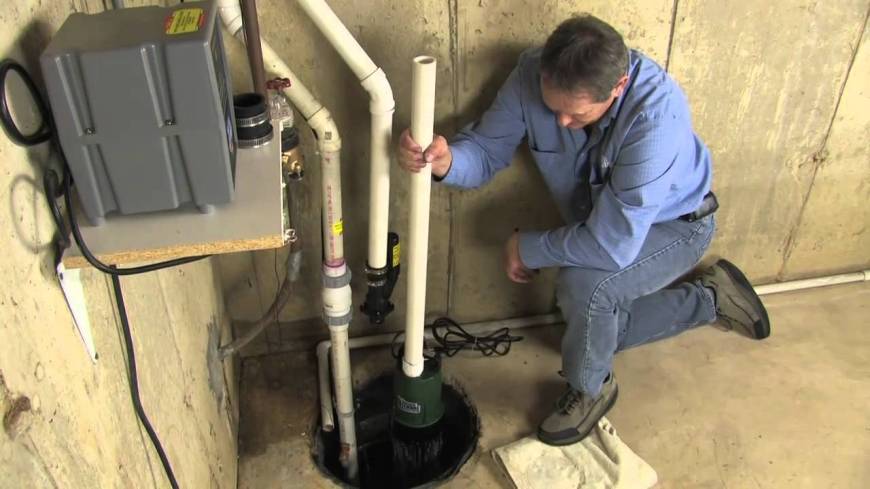What're your opinions on Keep Your Sump Pump Clean, It'll Keep You Dry?

Sump pumps are crucial parts in lots of homes, specifically in locations prone to flooding or extreme wetness. They assist protect against water damage by effectively removing excess water from basements or crawl spaces. However, like any other home appliance, sump pumps require normal maintenance to guarantee they operate effectively when needed the most. Cleansing your sump pump is an important part of its maintenance, and comprehending just how to do it effectively can conserve you from pricey repair work and prospective disasters.
Introduction
Preserving a tidy sump pump is important for its proper performance and longevity. Overlooking this essential job can bring about clogs, malfunctions, and inevitably, water damages to your building. Consequently, learning exactly how to clean a sump pump is critical for house owners who depend on these devices to maintain their basements completely dry and protected.
Signs of a Dirty Sump Pump
Knowing when your sump pump needs cleaning is critical for avoiding possible malfunctions. Some usual indications that show a dirty sump pump include strange sounds throughout procedure, reduced water circulation, and visible particles in the pit. If you observe any one of these symptoms, it's important to clean your sump pump immediately to avoid any more issues.
Planning for Cleansing
Prior to you start cleansing your sump pump, it's vital to take some safety and security precautions. Beginning by shutting down the power to the pump to avoid any type of electrical accidents. Additionally, wear ideal protective gear, such as handwear covers and safety glasses, to safeguard yourself from dirt, debris, and possible microorganisms.
Comprehending the Sump Pump
Before diving into the cleansing process, it's vital to have a basic understanding of how a sump pump functions. Generally installed in a pit or container listed below the basement flooring, a sump pump consists of numerous vital elements, consisting of a pump, a float button, and a discharge pipe. When water collects in the pit, the float switch triggers the pump, which after that pumps the water out with the discharge pipeline, far from the structure's structure.
Step-by-step Guide to Cleaning Up a Sump Pump
Turning off the Power
Begin by separating the power supply to the sump pump to avoid any mishaps while cleaning.
Looking For Proper Performance
Before re-installing the pump, execute a quick examination to guarantee that the float button triggers the pump properly. Put some water into the sump pit and observe the pump's procedure. If whatever is operating correctly, you can reconstruct the pump and reconnect the power supply.
Getting Rid Of Debris and Dust
Make use of a container or an inside story to remove any visible particles, dust, or debris from the sump pit. Dispose of the particles appropriately to avoid it from obstructing the pump or the discharge pipe.
Cleansing the Pump and Float Switch Over
When the pit is free from debris, carefully get rid of the pump from the pit. Check the pump and the float switch for any kind of indications of damages or wear. Use a soft brush or cloth to clean up the surfaces and remove any type of accumulated grime.
Flushing the System
After cleansing the pump and float button, purge the sump pit with clean water to get rid of any remaining dust or sediment. This will help ensure that the pump runs efficiently and successfully.
Upkeep Tips to Maintain Your Sump Pump Clean
In addition to periodic cleaning, there are a number of upkeep ideas you can comply with to keep your sump pump in optimum problem:
- Regular Assessment: Inspect your sump pump routinely for any type of indicators of wear, damage, or obstructions.
- Maintaining the Surrounding Area Clean: Ensure that the area around the sump pit is devoid of particles, dirt, and blockages.
- Evaluating the Pump Occasionally: Check your sump pump periodically by putting water right into the pit and observing its procedure. This will help you identify any prospective problems before they escalate.
Conclusion
Cleansing your sump pump is an essential aspect of its maintenance and makes sure that it operates efficiently when you require it one of the most. By adhering to the actions laid out in this overview and incorporating regular upkeep right into your regimen, you can expand the lifespan of your sump pump and secure your home from water damages.
6 STEPS ON HOW TO CLEAN A SUMP PUMP PROPERLY
UNDERSTANDING SUMP PUMPS
Your sump pump plays a crucial role in protecting your home by managing and removing excess water. It primarily functions as a “shield”, guarding your basement against the damaging effects of water accumulation. The pump is housed in a sump pit in the lowest part of your basement, and its job is to pump out any water that collects there.
During heavy rainfalls or when snow melts rapidly, water can infiltrate your basement, posing potential risks like flooding, structural damage, and harmful mold growth. Here, the sump pump springs into action, pumping out the intruding water and directing it away from your home.
SAFETY FIRST
Before cleaning, remember to prioritize safety. Disconnect the sump pump from the power source to prevent any accidental electric shocks. Also, wear sturdy gloves to protect your hands from any sharp or dirty components within the pump.
REMOVE THE SUMP PUMP
After ensuring your safety, the next step is to remove the sump pump from its pit. Doing this might require careful maneuvering as you don’t want to damage any pump components. Once removed, clean the sump pit to remove any accumulated debris or sludge.
INSPECT THE PUMP
Inspect the pump for any visible signs of wear or damage. Check the power cord, float switch, and impeller housing. If any components look worn out or damaged, consider replacing them to ensure optimal performance.
CLEAN THE PUMP
Thoroughly clean the pump with warm, soapy water. Make sure to rid it of any dirt, gravel, or other debris that might impede its performance. You can use a toothbrush to clean the small, hard-to-reach parts of the pump.
REINSTALL THE SUMP PUMP
- Reinstall the pump into the sump pit
- Make sure it’s positioned correctly to remove the water effectively
- Once it’s back in place, reconnect it to the power source
TEST THE PUMP
Finally, pour some water into the pit to ensure the pump works correctly. It should start automatically and begin pumping out the water; if it doesn’t, check the power source and the positioning of the pump.
Remember, while cleaning your sump pump is an essential part of home maintenance, hiring a professional plumber for a thorough inspection and cleaning at least once a year is also important. This will ensure that your pump is in optimal condition, ready to protect your home from potential water damage.
BEST PRACTICES FOR CLEANING SUMP PUMP DISCHARGE PIPES
- Regular Inspection: Regularly inspect your discharge pipes, especially during heavy rainfall or snowmelt periods. Look for any signs of blockage or damage. Early detection of problems can prevent serious issues down the line.
- Periodic Cleaning: Over time, sediment and debris can accumulate in the discharge pipes, impeding the flow of water. Regular cleaning helps keep the pipes clear and functioning efficiently. You can use a high-pressure water jet to effectively clean the pipes.
- Insulation During Winter: In colder climates, discharge pipes can freeze, blocking the outflow of water. Protect your discharge pipes from freezing temperatures by insulating them with foam pipe insulation. This will ensure the sump pump can continue to discharge water even in freezing conditions.
- Proper Positioning: The discharge pipe should be positioned to direct water away from your home’s foundation. Improper positioning can lead to water seeping back into the basement. Ensure the pipe is long enough and angled correctly.
- Installation of a Check Valve: A check valve prevents water from flowing back into your sump pit after the pump has pushed it out. Installing a check valve helps maintain the efficiency of your sump pump and reduces the risk of flooding.
- Minimize Pipe Turns: Every curve or turn in the discharge pipe can decrease the efficiency of water flow. By minimizing turns and bends in your discharge pipe, you can increase the efficiency of your sump pump.
https://www.fullspeedplumbing.com/how-to-clean-a-sump-pump-properly9999/

I stumbled upon that entry about Keep Your Sump Pump Clean, It'll Keep You Dry when looking around the web. Appreciated our entry? Please share it. Help others check it out. We truly appreciate your readership.
Visit My Website
Comments on “Simple Methods for Maintaining a Sump Pump”